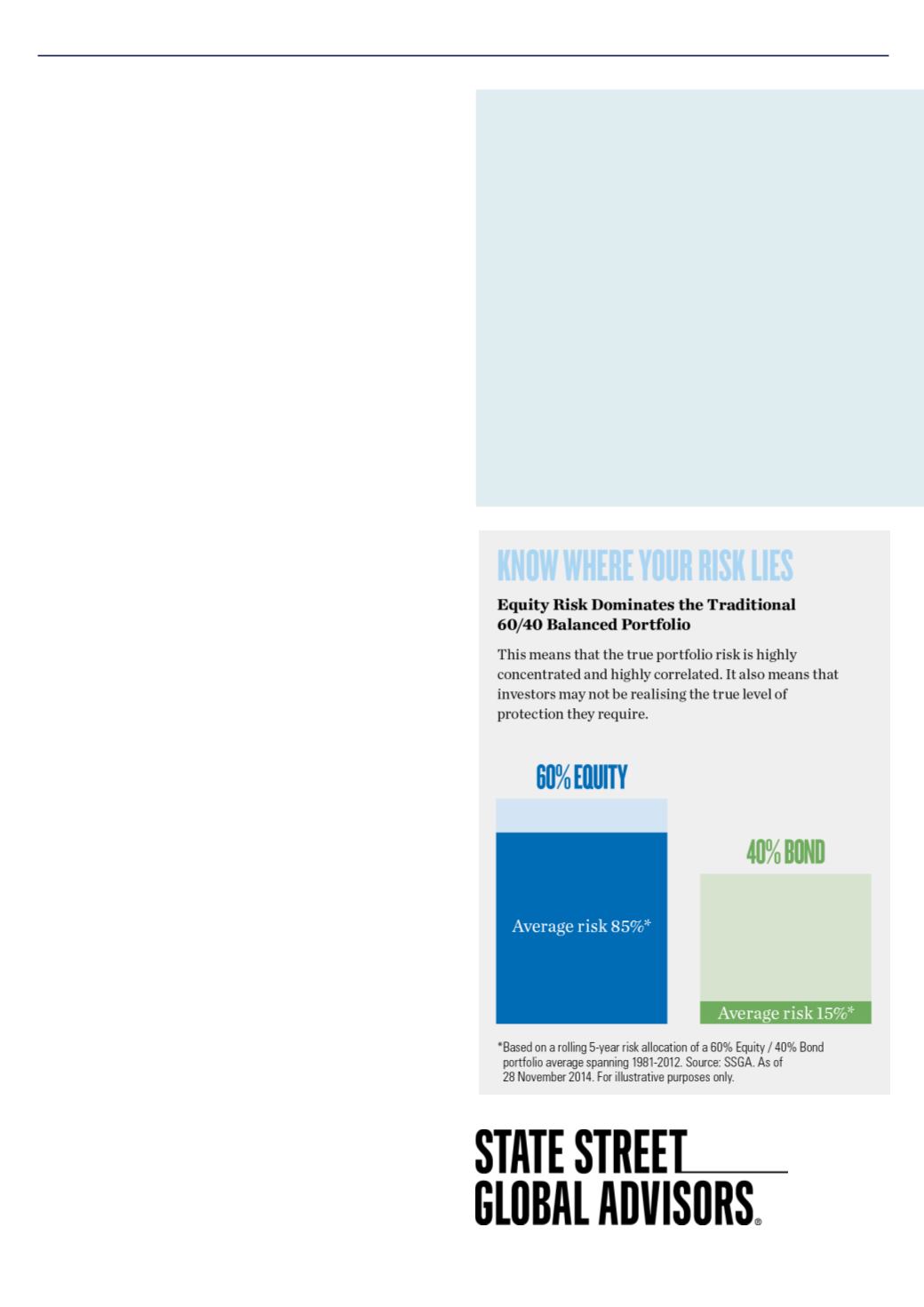
Irish Pensions Magazine Spring 2015
6
Analysis
Advertorial
F
or much of 2014markets were somewhat tamed by
central banks. We essentially found ourselves in a
low-volatility, low-volume and low-conviction bull
market as a potent combination of accommodative
monetary policy and forward guidance achieved one
of their primary goals; market stability.
The FTSE World Index has grown impressively and
the S&P© 500 Index has tripled since the depths of
the financial crisis and sovereign bond spreads have
collapsed well beyond pre-crisis levels. The Chicago
Board Options Exchange Market Volatility Index®
(VIX) — a measure of equity volatility — has been
low since the start of 2012.
THE DANGERS OF COMPLACENCY
The blip in late October 2014 may well have given
some investors pause for thought but for some time
now we have asked: Are investors conditioned to a low
volatility environment and possibly too complacent?
Low volatility combined with the need for higher yield
has driven investors further along the risk spectrum
and complacency could ultimately spell trouble for
many and precipitate the next market correction.
And it is not just US equity volatility that has been low
—European equity, interest rate and foreign exchange
volatility levels are also at near-decade lows.
WHAT COULD GO WRONG?
Volatility is driven by uncertainty and — through
coordinated monetary policy, together with bond
purchases and more recently forward guidance —
uncertainty has indeed been extraordinarily low.
However, we expect volatility to rise as the advanced
economies follow increasingly divergent paths with
their monetary policy.
The US and UK are already deliberating on their
tightening paths, whereas the European Central
Bank is only now implementing quantitative easing.
This could well be enough to force volatility from its
subdued state, but there are other risks on the horizon
that could cause a more sudden rise.
WHEN TO START, WHAT TO DO?
Although we note the risks that stem from high
valuations and the propensity for geopolitical
instability to change the investment landscape, we
also recognise in our conversations with clients that
there is a concern that adopting a ‘defensive’ stance
risks missing continued upside potential. This is
particularly the case against a backdrop of ultra-low
interest rates and Quantitative Easing (QE).
Getting the Big One Right
by Niall O’Leary
CONSIDERING THE RISK SIGNALS
Market Performance
Reflecting on last year’s market performance and
considering traditional valuation metrics, there
is indeed cause to pause and take stock. And it is
not just recent market performance that suggests
caution. As well as the VIX other risk metrics, such
as the Merrill Option Volatility Estimate Index — a
measure of bond market volatility — have fallen
to very low levels not seen since 2007, prior to the
global financial crisis.
Market Regime
SSGA’s in-house Market Regime Indicator, which
uses a mix of inputs, such as equity and currency
volatility and bond spreads to monitor market
conditions, spent most of last year indicating very
low risk, before moving sharply into High Risk in
October, a portent, perhaps, of things to come.


